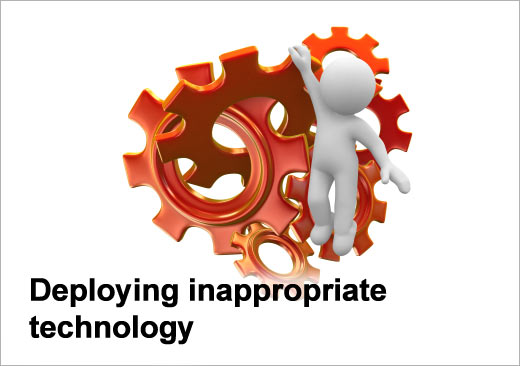
Avoid Pitfalls in Business Intelligence Software: A Practical Guide to Success
In today’s data-driven landscape, Business Intelligence (BI) software has become a cornerstone for informed decision-making. Companies across industries rely on BI tools to analyze data, identify trends, and gain a competitive edge. However, the path to BI success is often fraught with challenges. Implementing BI software without proper planning and execution can lead to wasted resources, inaccurate insights, and ultimately, failure. This guide aims to help you avoid pitfalls in Business Intelligence software and embark on a successful BI journey.
The promise of BI is compelling: improved efficiency, better customer understanding, and increased profitability. But realizing this potential requires a strategic approach. This article will explore common pitfalls in Business Intelligence software implementation and offer practical solutions to overcome them. We will delve into areas like data quality, user adoption, and vendor selection, providing actionable advice to help you navigate the complexities of BI.
Understanding the Importance of Strategic Planning
Before diving into the technical aspects of BI software, it’s crucial to emphasize the importance of strategic planning. A well-defined strategy acts as a roadmap, guiding your BI initiatives and ensuring alignment with your business goals. Without a clear strategy, your BI implementation is likely to wander aimlessly, producing little value.
The first step is to define your business objectives. What specific problems are you trying to solve? What key performance indicators (KPIs) are critical to your success? Clearly articulating these objectives will help you select the right BI tools and data sources. It will also help you measure the impact of your BI efforts.
Another critical aspect of strategic planning is stakeholder engagement. Involve key stakeholders from different departments in the planning process. This ensures that the BI solution meets the needs of all users. It also fosters buy-in, which is essential for successful adoption.
Data Quality: The Foundation of Reliable Insights
Data quality is arguably the most critical factor in BI success. Garbage in, garbage out. If your data is inaccurate, incomplete, or inconsistent, your BI reports and dashboards will be misleading. This can lead to poor decisions and lost opportunities. Therefore, addressing data quality issues upfront is paramount.
The first step towards ensuring data quality is data cleansing. This involves identifying and correcting errors in your data. This may include removing duplicate records, correcting spelling mistakes, and standardizing data formats. Invest in data cleansing tools and processes to automate this task.
Data governance is also essential. Establish clear policies and procedures for data management. This includes defining data ownership, setting data quality standards, and implementing data validation rules. Data governance ensures data accuracy and consistency over time.
Regular data audits can help identify and address data quality issues. Conduct periodic reviews of your data to ensure its accuracy and completeness. Use data profiling tools to identify anomalies and inconsistencies. Proactive data quality management is an ongoing process, not a one-time fix.
User Adoption: Driving Value Through Engagement
Even the most sophisticated BI software is useless if users don’t adopt it. User adoption is the key to realizing the value of your BI investment. Unfortunately, many BI implementations fail because users resist the new tools or are not properly trained.
To increase user adoption, make sure the BI solution is user-friendly. The interface should be intuitive and easy to navigate. The reports and dashboards should be clear and concise. Avoid overwhelming users with too much information.
Provide adequate training and support. Offer training sessions to help users understand how to use the BI tools. Create user guides and tutorials. Provide ongoing support to address user questions and concerns. Make training a priority.
Promote the benefits of BI to users. Explain how the BI solution can help them perform their jobs more effectively. Show them how it can improve their decision-making. Highlight success stories to encourage adoption. Demonstrate the value.
Involve users in the implementation process. Get their feedback on the design and functionality of the BI solution. This will help ensure that the solution meets their needs. It will also foster a sense of ownership. User involvement is key.
Vendor Selection: Choosing the Right Partner
Selecting the right BI vendor is another crucial decision. The vendor you choose will play a significant role in the success of your BI implementation. Therefore, carefully evaluate potential vendors before making a decision.
Consider your specific needs and requirements. What features and functionalities are essential? What are your budget and timeline constraints? Identify your must-haves. Then, evaluate vendors based on their ability to meet your needs.
Evaluate the vendor’s experience and expertise. Do they have experience in your industry? Do they have a proven track record of successful BI implementations? Check their references. Talk to their existing customers.
Assess the vendor’s support and training offerings. Do they provide adequate support? Do they offer training programs to help you get the most out of their software? Ensure they offer great support.
Consider the vendor’s long-term vision. Is the vendor committed to ongoing innovation? Will they continue to develop and improve their software? Choose a vendor with a future-proof solution. Consider scalability.
Cost Management: Avoiding Budget Overruns
BI projects can be expensive. Budget overruns are a common pitfall in Business Intelligence software implementations. Therefore, careful cost management is essential. This involves developing a realistic budget, monitoring expenses, and controlling costs.
Develop a detailed budget that includes all costs associated with the BI implementation. This includes software licenses, hardware, consulting fees, training costs, and ongoing maintenance. Be realistic about costs.
Track expenses throughout the project. Monitor your spending against your budget. Identify any potential overruns early. Take corrective action to stay within budget. Regular monitoring is key.
Negotiate favorable pricing with vendors. Explore different licensing options. Consider open-source alternatives. Look for cost-effective solutions. Explore all options.
Integration Challenges: Seamless Data Flow
Integrating BI software with existing systems can be complex. Integration issues are a common pitfall in Business Intelligence software projects. Therefore, careful planning and execution are essential. This involves identifying data sources, mapping data fields, and establishing data flows.
Identify all data sources that will feed into your BI system. This may include databases, data warehouses, and cloud-based applications. Understand your data sources.
Map data fields between your data sources and your BI system. This ensures that data is accurately transferred. Proper mapping is critical.
Establish data flows to ensure data is consistently updated. Automate data transfer processes. Regular updates are essential. Data flow maintenance is key.
Scalability: Planning for Future Growth
As your business grows, your BI needs will also grow. If your BI system is not scalable, it may become inadequate. Therefore, consider scalability during the planning phase. Scalability issues are a common pitfall in Business Intelligence software implementations.
Choose a BI solution that can handle your current data volume and future growth. Consider cloud-based solutions that offer scalability. Ensure enough capacity.
Design your BI system to accommodate future data sources and users. Plan for expansion. Future-proof your solution.
Regularly review your BI infrastructure to ensure it meets your needs. Monitor performance. Adjust resources as needed. Maintain a scalable solution.
Security Concerns: Protecting Sensitive Information
BI systems often handle sensitive data. Security breaches are a major concern. Therefore, prioritize security. Security lapses are a common pitfall in Business Intelligence software projects.
Implement strong security measures to protect your data. This includes access controls, encryption, and regular security audits. Protect your data.
Comply with all relevant data privacy regulations. Understand and follow the rules. Ensure compliance.
Train your users on security best practices. Educate them. Make them aware. Security awareness is key.
Implementation Time: Managing Expectations
BI implementations can take time. Setting realistic expectations is crucial. Unrealistic timelines are a common pitfall in Business Intelligence software projects.
Develop a realistic implementation timeline. Consider all tasks. Factor in potential delays. Be prepared.
Communicate the timeline to all stakeholders. Keep them informed. Manage expectations. Communicate clearly.
Monitor progress and adjust the timeline as needed. Be flexible. Adapt to changes. Be proactive.
Avoiding the Pitfalls: A Summary
Successfully implementing BI software requires careful planning, execution, and ongoing management. By understanding and avoiding pitfalls in Business Intelligence software, you can increase your chances of success. Focus on data quality, user adoption, vendor selection, cost management, integration, scalability, security, and realistic timelines. By prioritizing these areas, you can unlock the full potential of BI and drive data-driven decision-making.
Remember, the journey to BI success is ongoing. Continuously evaluate your BI efforts and make adjustments as needed. Embrace change. Stay informed. The world of BI is constantly evolving. By staying proactive and adaptable, you can ensure that your BI initiatives continue to deliver value.
Avoid pitfalls in Business Intelligence software by focusing on these key areas. Your business will benefit. Your team will thrive. Your decision-making will improve. Embrace the power of data. Make informed decisions. Succeed with BI.
[See also: Related Article Titles]

